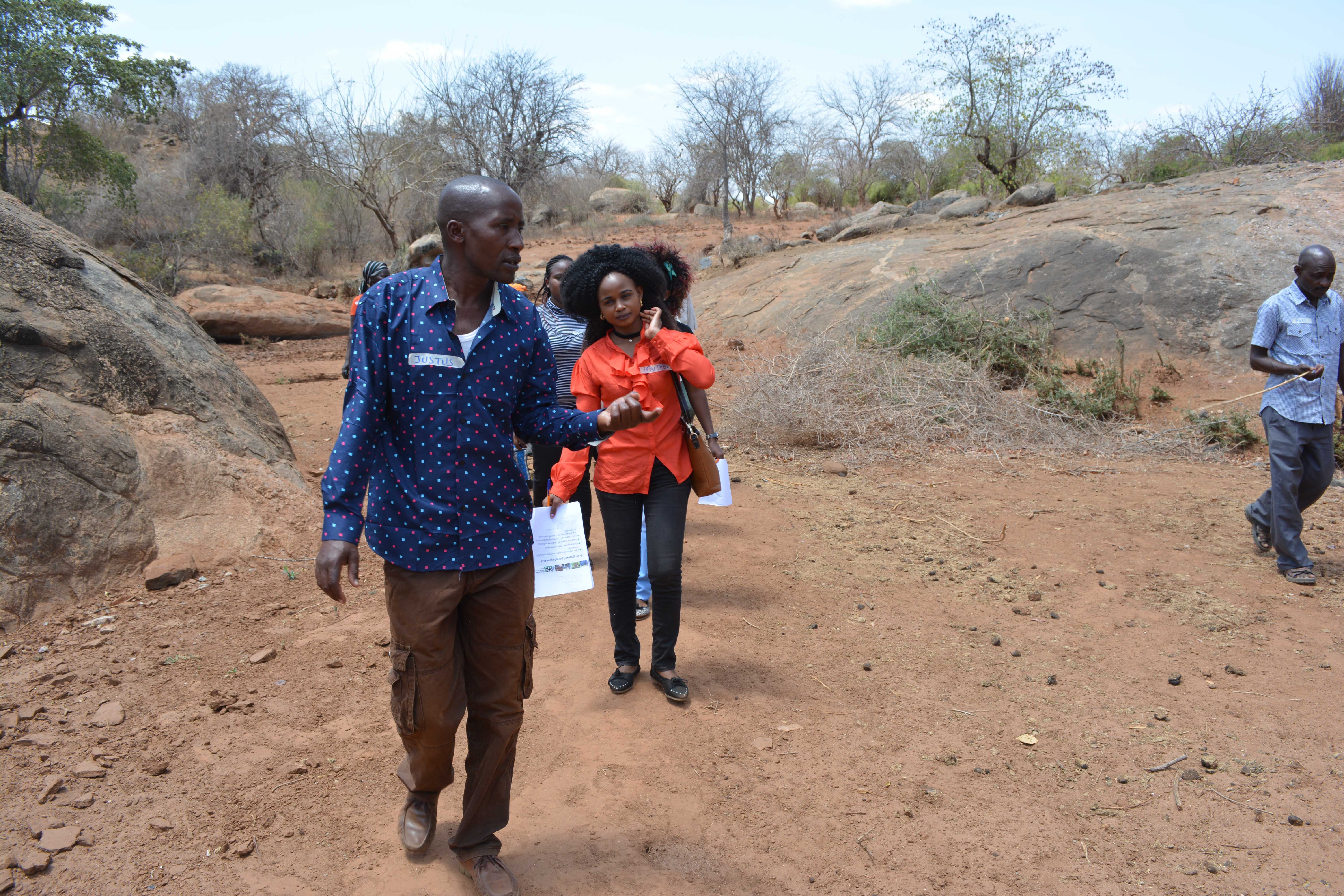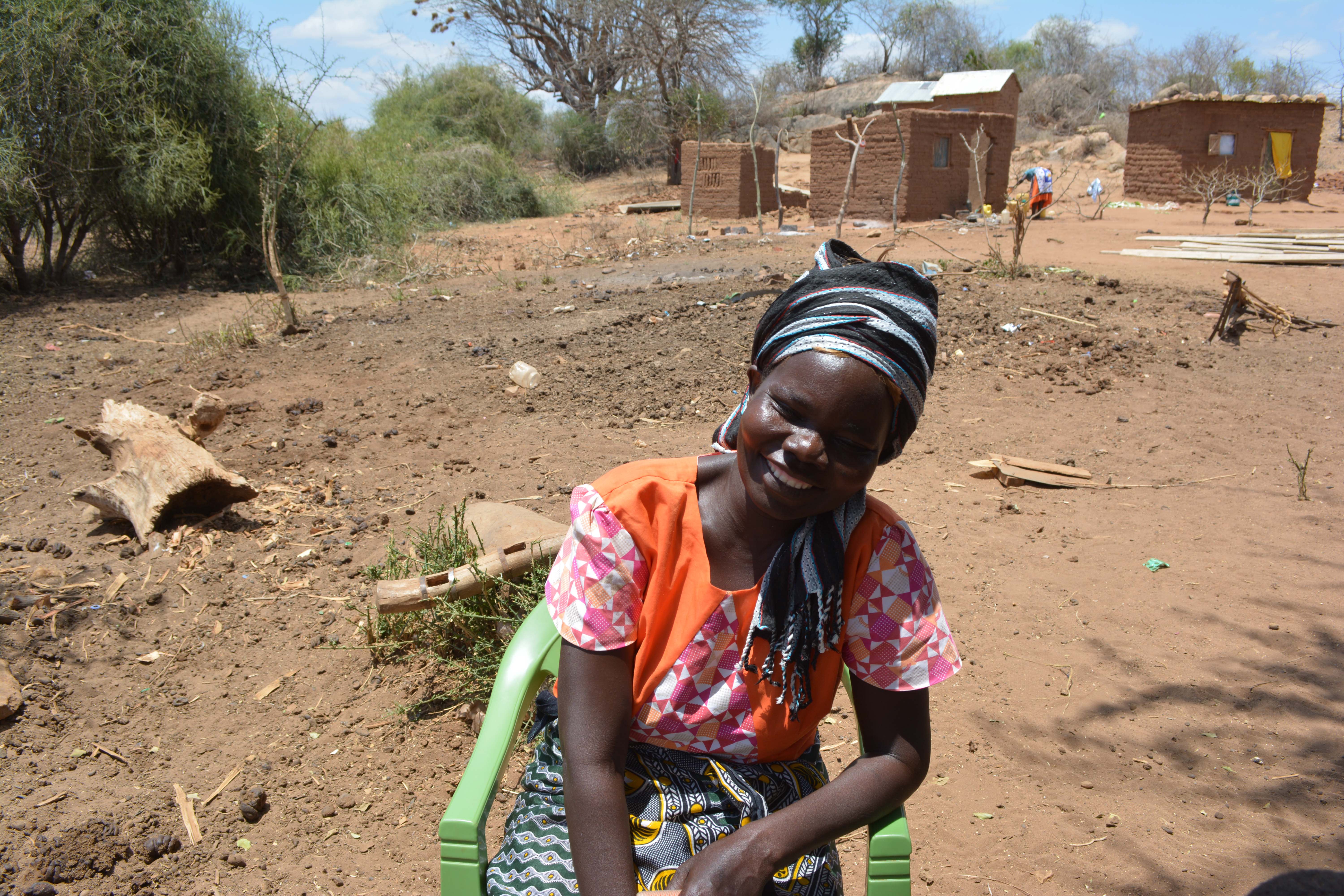This project is a part of our shared program with Africa Sand Dam Foundation. Our team is pleased to directly share the below report (edited for clarity, as needed).
Welcome to the Community
Ndineesi Uu Self-Help Group was formed in the year 2004 and registered in the year 2007. During the time of formation, they only had six members. Now, the current membership stands at 39. The group has appointed a leadership committee of nine members: five male and four female.
Members of the group come from the following villages: Katuluni, Kanyekini and Mwambui. The region has a total population of 2,314 people. The average household size is six members.
(Editor’s Note: While this many people may have access on any given day, realistically a single water source can only support a population of 350-500 people. That’s why we’ve formed a relationship with this group and plan to support them to do multiple water projects over the next couple of years until adequate water is available. To learn more, click here.)
58% of the group members earn less than 3,000 shillings a month, with 29% earning between 3,100 and 10,000 and only 13% earning above 10,000. This is because most people depend on farming as their main source of income, with farming dependent on the seasons that may or may not bring rain. Some other people depend on casual labor, but that’s only when there is work available on other people’s farms! There is high poverty here.
Water Situation
It is most common to collect water from open scoop holes in sandy, seasonal rivers using 20-liter plastic jerrycans. The jerrycans are then loaded onto donkeys or ox-drawn carts. If a household is too poor to afford one of those, then they must carry their water home on their backs. However, most households will have at least one donkey. Households that can afford it use motorbikes to carry water home.
This water is open to contaminants from many different sources. Livestock brought back and forth drink freely from the hole, often relieving themselves somewhere along the way. When it rains, even more waste is washed into this water source, not to mention the dirt itself that erodes and muddies the water.
There is rampant waterborne disease and the resulting treatment costs are huge, especially for these families that make so little. Long hours are spent walking to and lining up at the scoop holes.
Sanitation Situation
Most households here have a pit latrine, but there are a few families who haven’t afforded the time or materials to build their own. Because of this, open defecation still affects the entire community as certain people repeatedly resort to the privacy of bushes to relieve themselves. This waste is then spread by flies, wild animals, and rainwater.
Over a quarter of homes have a hand-washing station set up, proving that there is knowledge of proper hygiene but perhaps not enough motivation. There were some dish racks and clotheslines, but most households still need these helpful tools to safely dry their belongings up off the ground.
76-year-old Joseph Kitheka echoed what we saw, saying, “We have some idea of what ought to be done to improve the health status in this village but we don’t take it seriously because we are used to this kind of life. However, all we need is a little sensitization in form of a training and we will be good to go.”
Plans: Hygiene and Sanitation Training
To address gaps in hygiene and sanitation practices in Ikulya Community, training will be offered to self-help group members on three consecutive days. The members will learn about useful practices and tools to improve health, and then will be able to share those with their families and neighbors. Water transport, storage, and treatment methods will be taught, and hand-washing will be a focus. Group members will learn how to make their own hand-washing stations with everyday materials. To motivate participants, we must show the links between these activities and their people’s health. Open defecation certainly won’t be overlooked; everyone will be aware of how not using a latrine endangers the entire community.
Plans: Hand-Dug Well
This hand-dug well will be one of many construction projects to come in the next few years. We will spend a total of five years unified with this community to address their clean water shortage. More sand dams will be built to transform the environment. As the sand dams mature and build up more sand, the water table will rise. To safely access this water, hand-dug wells like this one will be installed.
The wells are always located next to sand dams. The sand dam location is proposed by the self-help group and then approved by the technical team. The group always proposes sites that will be central and convenient for every group member to access.
This particular hand-dug well is being built adjacent to this group’s ongoing sand dam project (click here to see). We have supplied the group with the tools needed for excavation. With the guidance of our artisans and mechanics, the excavated well will be cased, sealed with a well pad, and then finished with a new AfriDev pump.
Excavation takes a month or more on average, depending on the nature of the rock beneath. Construction of the well lining and installation of the pump takes 12 days maximum. The well will be lined with a concrete wall with perforations to allow water to seep in through the sand.



 Rehabilitation Project
Rehabilitation Project
























